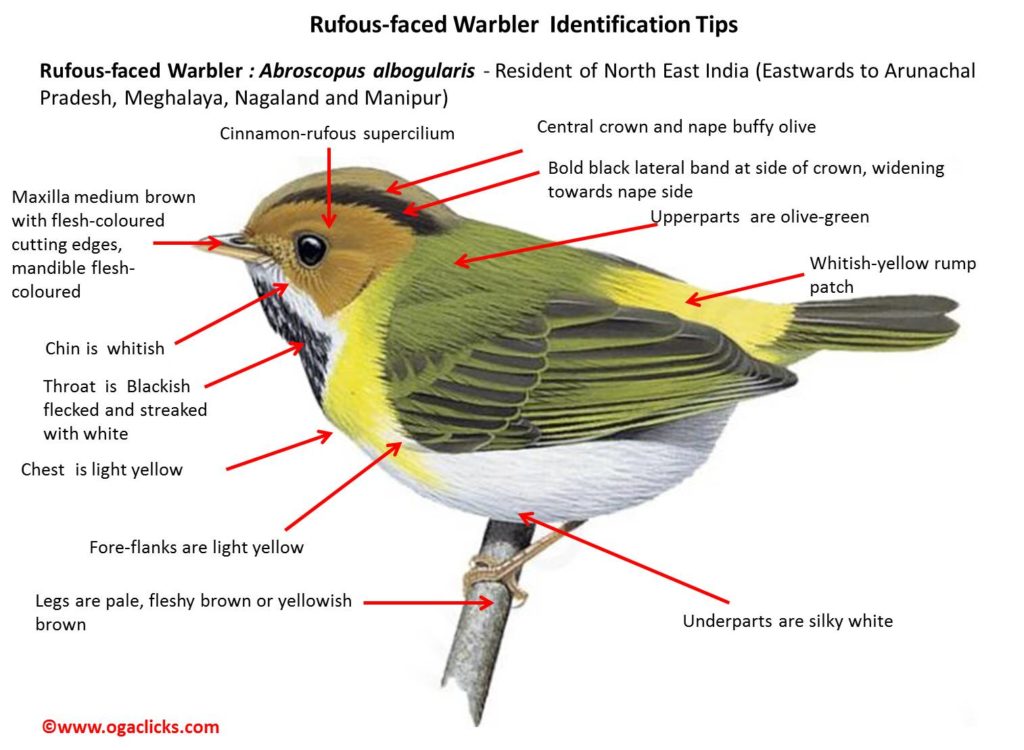Rufous-faced Warbler

Rufous-faced Warbler Abroscopus albogularis
Etymology:
- Abroscopus :Greek word abros –delicate; skopos –
- Albogularis :Latin wordAlbi – white ;Gulla – Throat { White throated}
Vernacular Names: Cachar: Daotisha mini
Distribution in India: Resident of Eastern Himalayas and hills of North East India.
Description: Size of 8–9 cm; Wt. of 4·7–5 g. It is a tiny, rather slim warbler with rather broad bill. The nominate race has forehead and side of head, including superciliary area as cinnamon-rufous, central crown and nape are buffy olive but obscured by long, bold black lateral band at side of crown, widening towards nape side. The upperparts are olive-green, contrasting whitish-yellow rump patch. The wings and tail are browner with olive-green feather fringes. The chin iswhitish; throat is blackish, flecked and streaked with white. The chest, foreflanks and undertail-coverts are light yellow. Remainder of underparts are clear silky white; underwing-coverts are pale yellow; iris is dark brown; maxilla is medium brown with flesh-coloured cutting edges, mandible is flesh-coloured; legs are rather pale, fleshy brown or yellowish brown. Both the sexes are similar, but female has whiter throat, spotted with black. The juvenile is duller than adult, with rufous of head washed olive, duller black crownstripes, virtually no yellow on chest.
Habitat: It is found in undergrowth of evergreen forest, especially bamboos, in mountain foothills; also bamboo thickets and secondary scrub in relatively open country. It is found from 600 m and 1800m.
Food habits: It eats tiny invertebrates gleaned from foliage. It forages chiefly in understorey; seems hyperactive, restlessly flicking wings and flaring tail, freely venturing higher to outer canopy, then tumbling back down to undergrowth, flycatching on the way; it rarely descends to ground level. It is found in small numbers scattered among mixed-species flocks outside breeding season.
Breeding habits: They breed in Apr to Jun in North East India. The nest is constructed by both sexes. The nest has a base of bamboo leaves, fibres and rootlets, with cup of felted moss in centre, typically placed in hollow in bamboo, close to stream. They lay a clutch of 3–5 eggs. Incubation is done by both sexes.